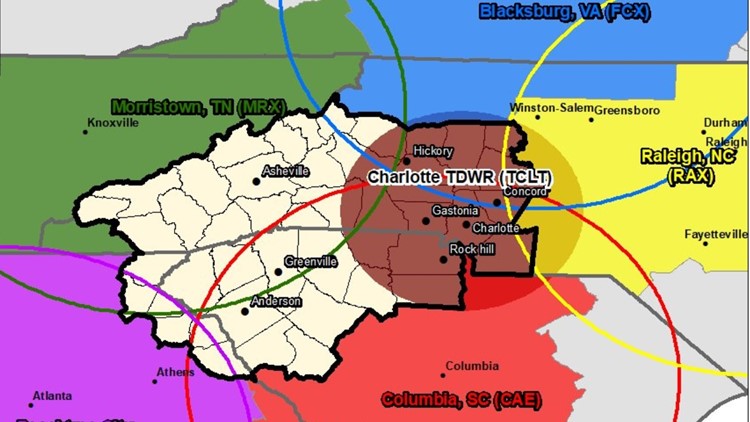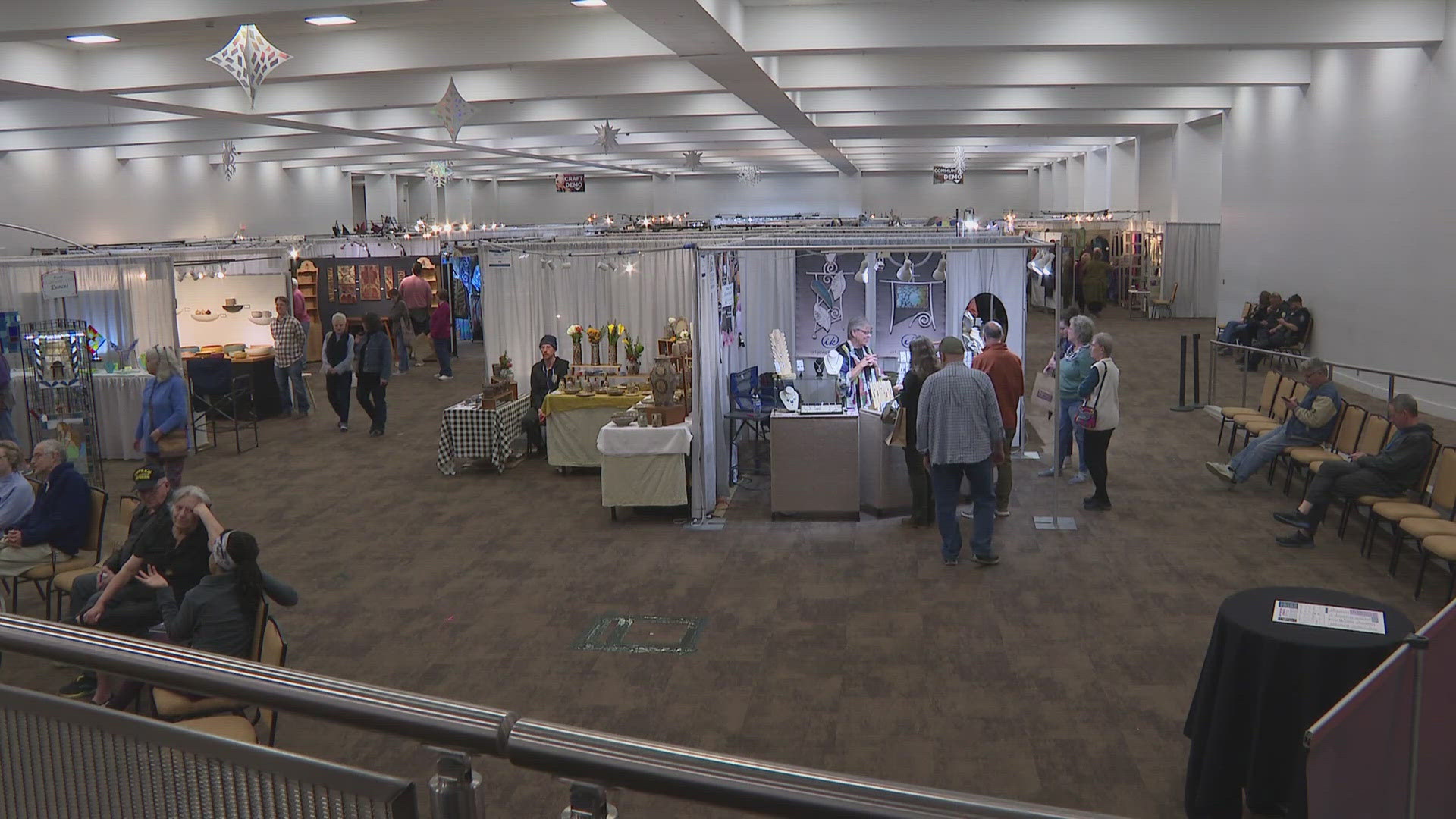GREER, S.C. — Two of the six primary weather radar sites operated by the National Weather Service in the Carolinas are offline. Through June, the other sites will also go offline as repairs and upgrades are completed at the prior sites.
Whenever a weather radar goes offline, neighboring radar sites can pick up the slack. However, like a cell phone tower too far away -- or a distant FM radio station you're straining to hear -- radars, like other radio towers, are less efficient when they are further away.
Less effective radar coverage means storms could be harder for you and meteorologists alike to see. Whether it's evident or not, every weather radar app available for phones and other screens receives data from radars operated by the National Weather Service.
While some popular apps like Radarscope will visually show users when a radar site is offline, most publically available apps do not. Instead, without knowing it, the radar image you could be seeing in your favorite weather app could be lacking data. (If you've ever experienced rain at a time your app said it wasn't raining, this could be one of the several reasons why.)
Charlotte has no NWS radar
Charlotte has no WSR-88D, the name of the full-power weather radars operated by the National Weather Service offices across the country. The radars were deployed in the 1990s and, as signified by the "88" in its name, use technology formalized in a 1988 design.
Even when all radars are active, Charlotte's nearest WSR-88D, "KGSP," is in Greer, South Carolina. The radar is operated by the National Weather Service's Greenville-Spartanburg office and is about 80 miles from Uptown Charlotte.
Slightly further away from Charlotte, are "KCAE" in Columbia, SC; "KRAX" in Raleigh, NC; and "KFCX" in Blacksburg, VA, which is operated by the National Weather Service office in Roanoke. "KMRX" operates out of Morristown, Tennessee but is limited due to the mountainous terrain.
After dangerous winds killed 37 people and injured 20 others in a Charlotte plane crash in 1994, Charlotte Douglas International Airport was awarded a "terminal doppler radar." "TCLT," as it's known, is in northwest Charlotte and monitors the weather surrounding the airport. The radar is operated by the Federal Aviation Administration and not the National Weather Service.
While helpful for localized weather, a terminal radar is smaller and produces less imagery than its WSR-88D counterpart.
With KGSP offline until February, meteorologists are having to lean on surrounding radars, including TCLT, to scan the skies. For you, your favorite radar app may or may not even use TCLT data. For example, users of the Radarscope app have to enable TCLT and other terminal radar sites inside the app's Advanced Settings menu.
Radar hole

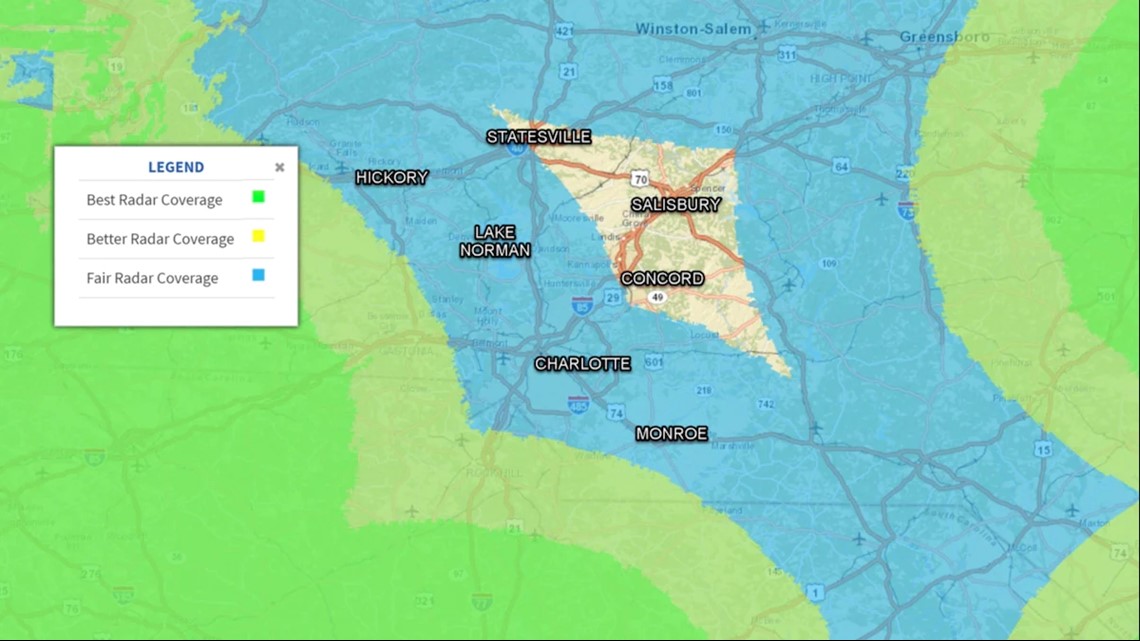
Even when all the weather radars are operating, Charlotte suffers from what Panovich calls a "radar hole." While some radar coverage is still present, the signal is less ideal than preferred.
The curvature of the earth causes a radar beam to get further and further away from the ground as it travels. For KGSP in upstate South Carolina, a beam height of one thousand feet over Spartanburg, South Carolina climbs to seven thousand feet by the time it arrives in Charlotte.
Certain weather events, like tornadoes, could literally slip under the radar, with the radar's beam too high to see that portion of the storm. That's what happened when four people were injured by an EF-2 tornado in Harrisburg, North Carolina in 2012.
Harrisburg, located in Cabarrus County, along with neighboring Concord, Salisbury, and Statesville are in the heart of the radar gap, which is created when you compare the four neighboring WSR-88D radar sites.
While the gap has prompted some to build their own private radar sites over the years. Panovich is calling for a public solution, as he told the Washington Post in 2020.
Keeping old tech alive
Until new radar solutions can be explored, the National Weather Service has to keep its aging generation of weather radars online. That's where Service Life Extension Program, also known as SLEP, comes in.
The nationwide program upgrades radars with the intent of keeping them operating through the year 2030 and beyond. The process, overseen by the National Weather Service's Radar Operations Center, upgrades key components including signal processors, the transmitter, and the pedestal, which holds the radar dish in place as it rotates 360 degrees.
Replacing the pedestal is one of the four phases within SLEP. It requires two weeks and a crane, which lifts the 15,000-pound pedestal into place.
Beginning in January and continuing through June, technicians are scheduled to replace all the pedestals on the WSR-88Ds serving both North Carolina and South Carolina.
Work is already underway, as scheduled, in Wilmington, North Carolina.
Through the week of Jan. 9, the pedestal is being replaced in Wilmington.
Subject to change, technicians were then scheduled to visit Columbia, South Carolina the weeks of Jan. 23 and 30. Work would then move to Charleston during the weeks of Feb. 13 and 20.
Greer was scheduled for the weeks of March 6 and 13 but an unforeseen problem has advanced the work there, which will begin on Jan. 23.
Per the schedule, technicians were then scheduled to go to Blacksburg, Virginia the weeks of March 27 and April 3. Work would begin in Raleigh on April 17 and 24. Morehead City is scheduled for work the weeks of May 8 and May 15. The last site serving the Carolinas, Wakefield in Virginia, is scheduled for May 29 and June 5.
Repairs typically take two weeks. And while the start of upgrades can be delayed because of severe weather, a radar cannot be brought back online quickly in the midst of repairs. That means one or more radar sites in the Carolinas could be offline during portions of the typical spring severe weather season.
Across the country, SLEP is scheduled to be completed on the nation's 159 operational radars by the end of 2023. The project is costing the National Weather Service, the United States Air Force, and the FAA $135 million.
GSP repairs

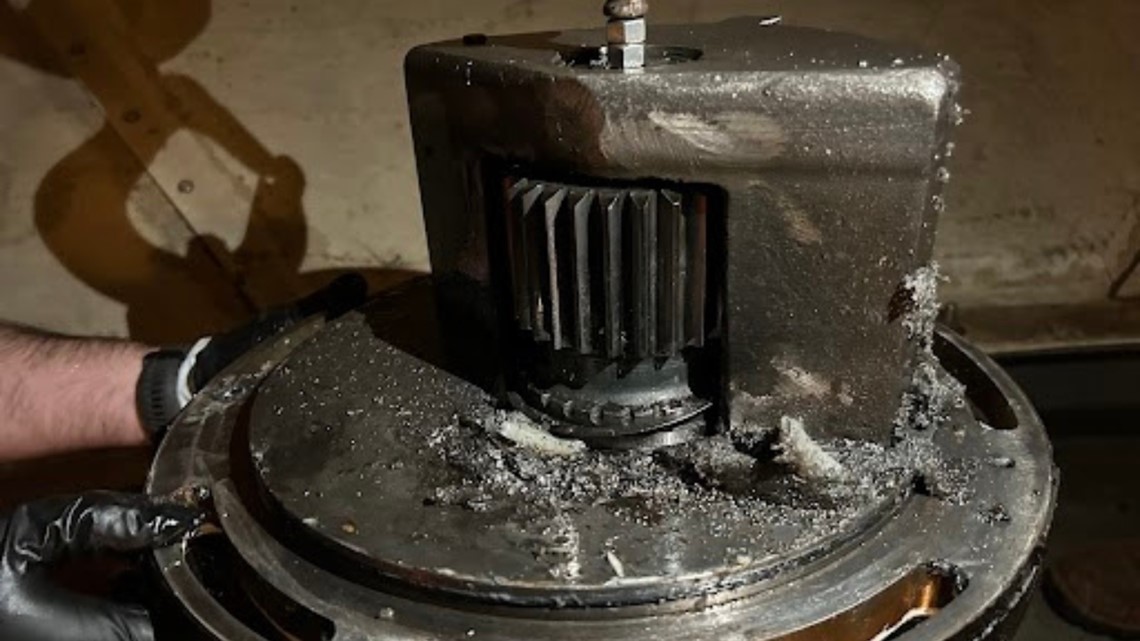
The radar in upstate South Carolina jumped the line when it unexpectedly went offline on Dec. 31. The bull gear had been damaged and could no longer spin the radar atop the pedestal. Without the ability to spin, the radar cannot get a 360-degree view of the sky.
A photo from the National Weather Service shows metal shavings from the destroyed bull gear. After 27 years, the bull gear needed replacing, a project that also involves removing the pedestal.
So rather than wait until March, the radar in Greer is getting an expedited repair.
Starting the week of Jan. 23, and continuing through Feb. 3, the pedestal will be removed and replaced. While this work was originally scheduled for March as part of SLEP, technicians will complete that work ahead of schedule while also replacing the bull gear.

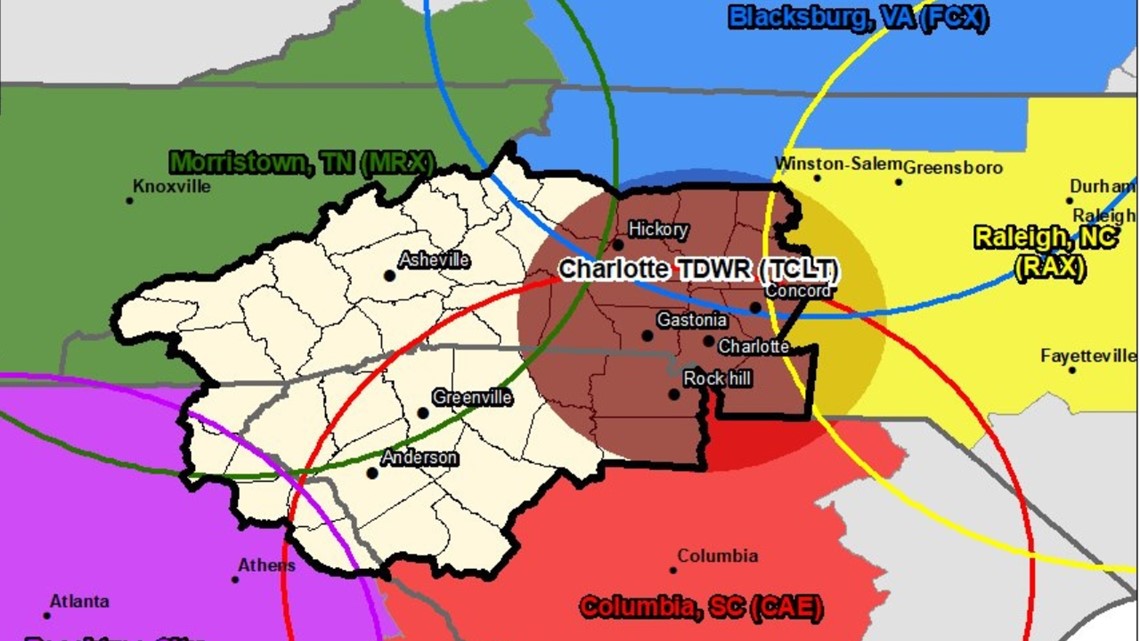
Until then, the surrounding network of weather radars will need to pinch-hit. It's the same song-and-dance that will be repeated through June as repairs and upgrades later happen at the other sites.
Depending on timing, the conversation regarding radar outages could reoccur if and when severe weather impacts the region.

